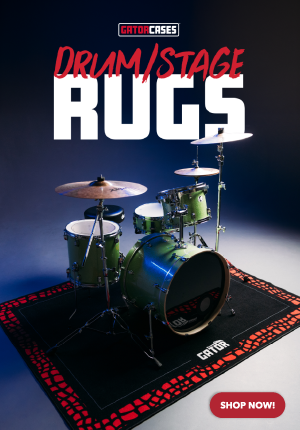March 29, 2021 I Anniversary
Fender Looks Back During 75th Anniversary Year

Justin Norvell
Fender is celebrating its 75th anniversary this year. The musical instruments manufacturer turned iconic brand was founded in 1946, a fertile moment in American history, particularly as pertains to music. World War II had ended the previous year. In two years, the LP would be invented, and, one year later, the 45 RPM seven inch record would be invented. Both of these allowed recorded music to spread more widely than ever before, both in album form and in individual song form.
Justin Norvell, executive vice president of Fender products, spoke with Music Inc. about how Fender co-existed with that timeline and helped define how music has sounded and the course of its evolution over the last 75 years.
“It’s been a journey from being timely to timeless,” he said. “So Leo [Fender] starting with his repair shop and then making lap steels, he was into Hawaiian music and Western swing,” he said. “These instruments were built so differently than their contemporaries of the time, which were more typical luthier and more like violin-style building than the mass produced and modular, easily serviced way that Leo chose to build these solid-body instruments. It was right at that inflection point in the perfect time [when] there were new musical genres forming — the idea of rock and roll and people wanting to play something different to differentiate themselves from what had happened before. And there was also, with our amplification, the opportunity to play louder and louder.”
Norvell underscored the importance of the introduction of the electric bass. The Fender Precision Bass was introduced to the public in 1951 and became the first widely used, popular electric bass.
“That popularization of the electric bass changed music because it allowed everybody to turn up,” Norvell said. “It forced P.A.s to get louder. It allowed bands to play larger venues. I think it was Quincy Jones [who] said that the most important inventions of the 20th century were the airplane and the electric bass.”
Norvell pointed to Fender’s different platforms — guitar models that were introduced and have morphed over time — as defining musical history.
“Seventy-five years, that recorded body of work, that music, that people chose to use our products to play on iconic songs is one of the things that’s really led to the endurance and continued relevance of the brand,” he said. “One of the things that’s amazing, unique and compelling about Fender instruments is if you’re a guitar player, you can hear a song and you can be like, ‘That’s a Stratocaster’ or, ‘That’s a Telecaster.’ But you can also hear that’s Mark Knopfler or John Mayer or Brad Paisley or Eric Clapton. These instruments are transparent enough that they have a voice, but then they allow you to have a voice.”
According to Norvell, the versatility of Fender guitars is why it’s lasted through so many seismic shifts in popular music. “That’s why you’ve got Fender in Western swing and then in the early rock and roll scene, going all the way up punk rock at CBGBs in the ’70s and into goth and New Wave in the ’80s, surf music in the ’60 to grunge in the ’90s,” he said. “Throughout that time you have people [who] are playing these instruments and the next generation is getting inspired by those people. So one Buddy Holly leads to a Keith Richards, which leads to an Elvis Costello, which leads to a Kurt Cobain.”













